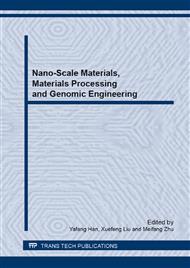p.522
p.530
p.536
p.543
p.549
p.554
p.560
p.566
p.574
Multiple Helium Atoms Diffusion in Tungsten: A Molecular Dynamic Simulation
Abstract:
The diffusion process of multiple He atoms in W is simulated by a molecular dynamics (MD) method with the W-H-He analytic bond-order potential. The diffusivities of different number of helium (He) atoms in W are determined by the mean squared displacement (MSD) method at different temperatures. The diffusivity-temperature (D-T) relationship is fitted to the Arrhenius equation to obtain the pre-factor and the diffusion barrier. Under the temperature of 1200K He atoms diffuse together, and above 1200K they separate from each other. When the number of He atoms is greater than three, all He atoms oscillate at the tetrahedral interstitial site (TIS) instead of diffusing under 400K. In the temperature range of 400-1200K, the diffusion barriers of He atoms, the number of which is from two to five, are 0.098, 0.170, 0.125 and 0.112eV, respectively. Contrasting with one He atom (0.058eV), the higher diffusion barriers reflect a greater difficulty in diffusion of multiple He atoms in W. In addition, when the number of He atoms is over five, vacancies are formed in W, and He atoms occupy the vacancies.
Info:
Periodical:
Pages:
549-553
Citation:
Online since:
April 2014
Authors:
Keywords:
Price:
Сopyright:
© 2014 Trans Tech Publications Ltd. All Rights Reserved
Share:
Citation:


